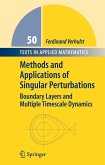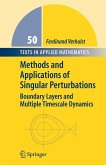The title gives a reasonable ?rst-order approximation to what this book is about. To explain why, let's start with the expression "di?erential equations." These are essential in science and engineering, because the laws of nature t- ically result in equations relating spatial and temporal changes in one or more variables.Todevelopanunderstandingofwhatisinvolvedin?ndingsolutions, the book begins with problems involving derivatives for only one independent variable, and these give rise to ordinary di?erential equations. Speci?cally, the ?rst chapter considers initial value problems (time derivatives), and the second concentrates on boundary value problems (space derivatives). In the succeeding four chapters problems involving both time and space derivatives, partial di?erential equations, are investigated. This brings us to the next expression in the title: "numerical methods." This is a book about how to transform differential equations into problems that can be solved using a computer.The fact is that computers are only able to solve discrete problems and generally do this using ?nite-precision arithmetic. What this means is that in deriving and then using a numerical algorithmthecorrectnessofthediscreteapproximationmustbeconsidered,as must the consequences of round-o? error in using ?oating-point arithmetic to calculatetheanswer.Oneoftheinterestingaspectsofthesubjectisthatwhat appears to be an obviously correct numerical method can result in complete failure. Consequently, although the book concentrates on the derivation and use of numerical methods, the theoretical underpinnings are also presented andusedinthedevelopment.








